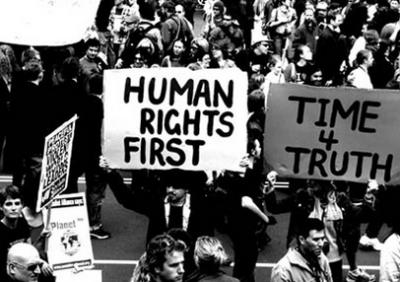Difference between revisions of "Counterculture Through The Ages"
From Londonhua WIKI
Ekmceachern (talk | contribs) |
Ekmceachern (talk | contribs) |
||
| Line 9: | Line 9: | ||
}} | }} | ||
=Abstract= | =Abstract= | ||
| − | This project aims to give a complete | + | This project aims to give a complete understanding of what counterculture is and where examples of it can be found in history. Also, it attempts to identify the counterculture of today. When people think of counterculture most of the time hippies and the 1960s will pop into their head, but time periods like the enlightenment can also be considered counterculture by its definition. At WPI I have taken 2 History courses and 1 Philosophy course: HI 1332, HI 2332, and PY1731. |
<br><br> | <br><br> | ||
Revision as of 11:33, 7 June 2017
Contents
The History of Counterculture
 Counterculture of the 1960s |
Abstract
This project aims to give a complete understanding of what counterculture is and where examples of it can be found in history. Also, it attempts to identify the counterculture of today. When people think of counterculture most of the time hippies and the 1960s will pop into their head, but time periods like the enlightenment can also be considered counterculture by its definition. At WPI I have taken 2 History courses and 1 Philosophy course: HI 1332, HI 2332, and PY1731.
Introduction
I suggest you save this section for last. Describe the essence of this project. Cover what the project is and who cares in the first two sentences. Then cover what others have done like it, how your project is different. Discuss the extent to which your strategy for completing this project was new to you, or an extension of previous HUA experiences.
As you continue to think about your project milestones, reread the "Goals" narrative on defining project milestones from the HU2900 syllabus. Remember: the idea is to have equip your milestone with a really solid background and then some sort of "thing that you do". You'll need to add in some narrative to describe why you did the "thing that you did", which you'd probably want to do anyway. You can make it easy for your advisors to give you a high grade by ensuring that your project milestone work reflects careful, considerate, and comprehensive thought and effort in terms of your background review, and insightful, cumulative, and methodical approaches toward the creative components of your project milestone deliverables.
PLEASE NOTE: this milestone template has only a few sections as examples, but your actual milestone should have many relevant sections and subsections. Please start to block out and complete those sections asking yourself "who, what, when, where, and why".
Remember, as you move toward your creative deliverable, you're going to want/need a solid background that supports your case, so you want it to paint a clear and thorough picture of what's going on, so that you can easily dissect your creative component and say "This thing I did is rooted in this aspect of my background research".
Section 1: Background
What is Counterculture?
The 1960s cannot be talked about without mentioning the concept of counterculture. A counterculture, "rejects or challenges mainstream culture or particular elements of it" [1]. A counterculture action aims to show opposition, disagreement, and/or rebellion towards current culture in place. Some ways counter culture is often displayed is through protesting against a particular issue, rebelling against an established way of doing things, trying to overcome oppression, and even creating a new culture when the current one in place is dissatisfying[2]. Methods used during the 1960s, and even all throughout the 20th century to express countercultural points of view were meant to promote action and provoke change among people. Often the unacceptability of counterculture is eventually taken as a normality by the general population and considered mainstream culture. Throughout the background of this project counter culture will be referenced and referred to many times, because the 1960s was a period of protest and rebellion against societal norms.
The Enlightenment
Suffrage
Civil Rights Movements
The 1960s
Section 2: Deliverable
Today's Counterculture
Gallery
Conclusion
In this section, provide a summary or recap of your work, as well as potential areas of further inquiry (for yourself, future students, or other researchers).
References
Add a references section; consult the Help page for details about inserting citations in this page.
Image Gallery
If appropriate, add an image gallery
- ↑ Counter Culture. (2006, September 22). Retrieved June 06, 2017, from http://www.bl.uk/learning/histcitizen/21cc/counterculture/counterintro.html
- ↑ Counter Culture. (2006, September 22). Retrieved June 06, 2017, from http://www.bl.uk/learning/histcitizen/21cc/counterculture/counterintro.html
